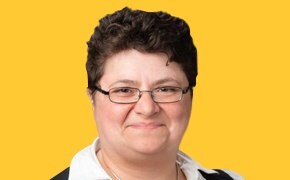Ayse Turak: My Next Great Impossible

Dr. Ayse Turak followed the curiosity cultivated by her parents all the way to her current project: helping satellite communications break through the clouds.
Current satellite communication based on visible and near-infrared light does not work for all-weather conditions. Optical satellite communication at mid-infrared is essential for practical all-weather networks. Unfortunately, mid-infrared lasers with high optical power are not available on the market. We are developing bright, lightweight and cost-effective lasers using perovskite nanoparticles for both ground-based and satellite-based communications
“I see research as a collaboration between myself and my students...”
A few years ago, a master’s student of mine asked if we could make a microwave laser from our materials to send energy to a satellite. In a roundabout way that is the reason I started working on this project, even though it is a fundamentally different problem. He asked, “can we do it?” I see research as a collaboration between myself and my students – I always tell them that they should be the expert in their research, not me. My role is to learn from them, so together we can solve the cool problems.
“…once the seed is planted, I need to see where it leads me.”
My parents encouraged my curiosity from a young age. It’s like once the seed is planted, I need to see where it leads me. This is my mindset in the midst of this global pandemic – I am stepping out of my comfortable research topics to work on a project to make antiviral surfaces using the nanoparticles we make in the lab every day. It’s a real stretch for me, but the question of ‘what if?’ drives me – what if we can help? What if we try?
FAQ
Q: What kind of mindset do you need to achieve the Next Great Impossible?
A: You need curiosity and willingness to try new things outside your comfort zone.
To continue reading please sign in or create an account.
Don't Have An Account?